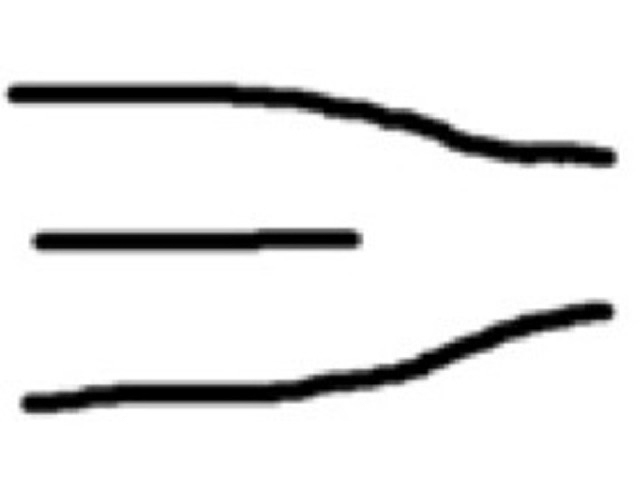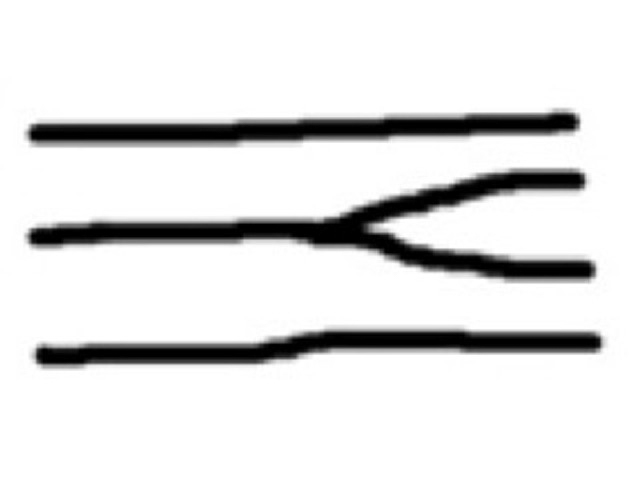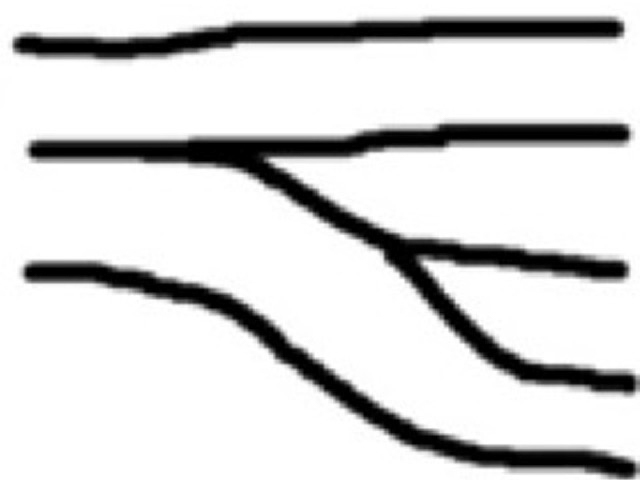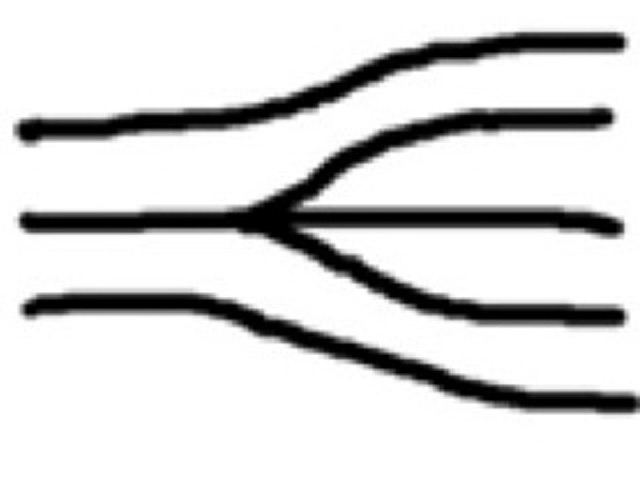Main menu
Common skin conditions

NEWS
Join DermNet PRO
Read more
Quick links
Author: Kevin Zheng, Medical Student, University of Auckland. Chief Editor: Dr Amanda Oakley, Dermatologist, Hamilton, New Zealand, June 2015.
What are fingerprints?
How do fingerprints arise?
Friction ridge development
Clinical relevance of loss of fingerprints
Fingerprints are the pattern of the epidermal ridges on fingers. They consist of friction ridge units that can be characterised by patterns (arrangement of ridges) and minutiae (small specific details such as bifurcations and ridge endings).

Ridge ending

Dot

Bifurcation

Island

Hook

Double-bifurcation

Enclosure

Bridge

Trifurcation
Fingerprints develop during early fetal life. They undergo various phases, of which crucial events occur by the early weeks of the second trimester.
There are two main theories that aim to explain the processes underlying friction ridge formation.
The mechanical instability theory regards ridge formation as a consequence of a buckling process. Ridges form perpendicular to lines of greatest stress.
The neuro-ectoderm theory describes an interdependent relationship between the neurological map and the pattern of primary ridges.
Friction ridges can become thicker and shorter with ageing, and are more difficult to discern.
Loss of fingerprints is sometimes observed in various skin diseases. These include trauma, benign and malignant skin lesions, infections and inflammatory skin conditions
These skin pathologies can cause disruptions to papillary lines, altering the depth and steepness of the ridges and valleys. This can affect analysis by modern-day biometric pattern recognition systems. This can interfere with the reliability of personal identification methods or "fingerprinting".
Most cases of damage to fingerprints are reversible, as the pathology is relatively superficial. However permanent scarring can occur with deep lesions.

Reduced fingerprint due to dermatitis